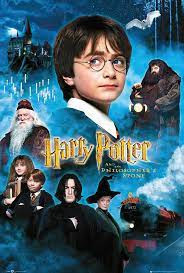Orphans in and out of the Storm

There’s something poignantand (let’s face it) picturesque about orphans. The idea of a child movingthrough the world without the loving embrace and guiding presence of parents issad indeed. But many of us tend to believe that children who lack one or bothparents make up for this loss by being that much smarter, pluckier, andstronger than their better-endowed peers. In the end, these kids are the heroesof their stories: at least, that’s the way it works in Grimms’ Fairy Tales and manynovels. Just think of what Charles Dickens has written, in works like GreatExpectations and Oliver Twist. His motherless, fatherless boysultimately emerge (after many disturbing adventures) triumphant, as doesCharlotte Brontë’s Jane Eyre. And it’s not merely a 19th centuryphenomenon: let’s not forget one of the most famous, most ultimately powerful,orphans of them all—Harry Potter. a
A colleague of mine, attorneyMarlene Trestman, became (to her own surprise) a biographer when she published FairLabor Lawyer: The Remarkable Life of New Deal Attorney and Supreme CourtAdvocate Bessie Margolin. Marlene, from New Orleans, had the misfortune tolose both her parents by the time she was eleven. Fortunately for her, theJewish Children’s Regional Services saw to her needs, eventually connecting herwith foster parents she still regards with deep familial love. She grew up wellaware that the building at the intersection of St. Charles and Jeffersonavenues where she received social services had at one time been the venerableJewish Children’s Home. The Home, founded before the Civil War, hadwelcomed Jewish orphans from all over the American South, including the smartand talented Bessie Margolin. Its history became Trestman’s new writingproject, Most Fortunate Unfortunates: The Jewish Orphans’ Home of NewOrleans.
What does all this have to dowith movies? I asked Marlene whethermoviegoing played any part in the lives of the orphans housed at the Home inits early days. Here’s what she wrote back: “Superintendent Leon Volmer (who wasan early adopter of the newfangled technology of motion pictures) reported tothe board in August 1916 about the movies he screened in the Home (with adonated film projector): ‘The bi-weekly picture shows are not only a thing ofbeauty and joy to the children but are also very beneficial educationally . . .We have some exceptionally fine pictures, such as The Children of the Ghetto,Wanted A Home, The Foundling, and Nature Studies. Suchpictures not only broaden the mental horizon of the children but strengthentheir moral vision and are an attractive yet powerful aid in the characterbuilding of children.”” Marlene notes that in the sentence aboutcharacter-building, “Volmer may have been referring to the fact that loss ofmovie privileges provided a sure-fire method to curb misbehavior!”
Latertoo the orphans were treated to entertainments about kids like themselves whoseparents were dead or missing. In 1918, they saw an actual live play, Pollyanna, with aseventeen-year-old Helen Hayes as the “pluckily cheerful orphan girl” whospreads joy wherever she goes. (This sappy perennial was to become a moviefavorite. It starred Mary Pickford in 1920 , while Hayley Mills played the rolefor Disney in 1960.) The Home organized a special movie outing in 1919 to seePickford play yet another orphan in Daddy Long Legs. In 1922 theywatched what sounds like Orphans of the Storm, starring Lillian and Dorothy Gish as waifs survivingthe French Revolution. If you have the misfortune of being orphaned, I guessit’s encouraging to know you’re not alone.

Beverly in Movieland
- Beverly Gray's profile
- 10 followers



